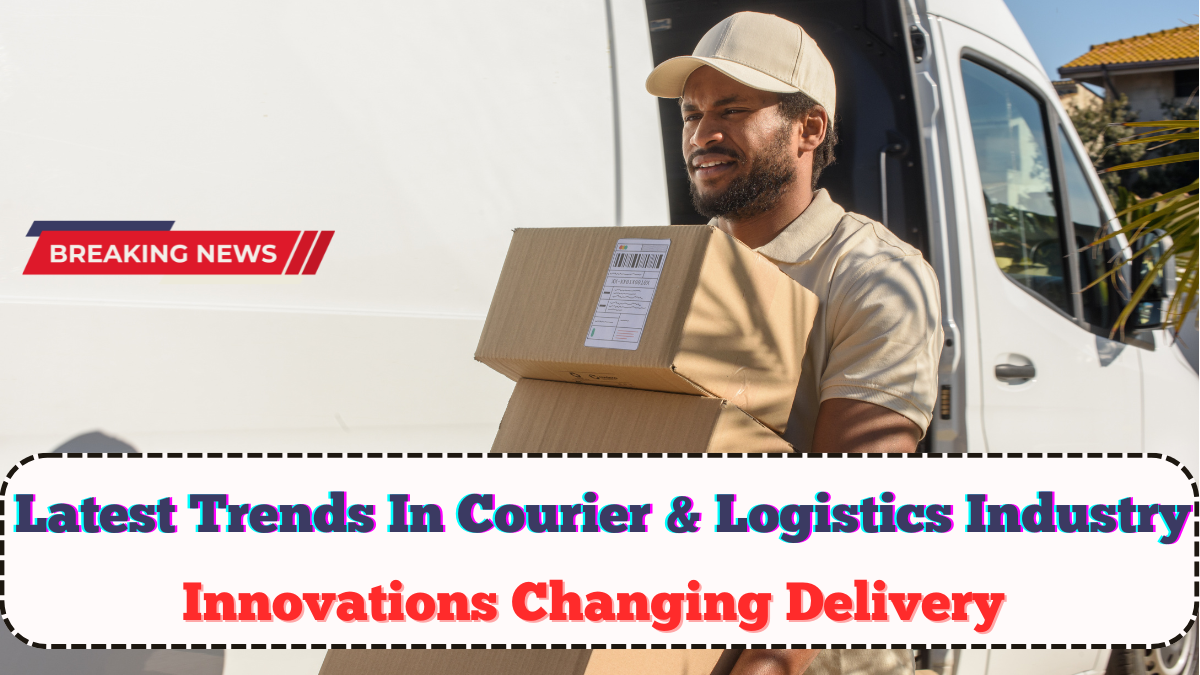In 2025, the courier and logistics sector is moving faster, smarter, and greener than ever before. With e-commerce booming, supply chains going global, and customer expectations rising, the latest trends in courier and logistics industry 2025 are revolutionizing how goods are transported, tracked, and delivered.
This $12 trillion industry is now powered by automation, AI, real-time tracking, sustainable shipping, and predictive analytics. Logistics is no longer just about moving packages — it’s about creating intelligent, responsive, and customer-centric delivery networks that can scale instantly.
Whether it’s B2B freight, last-mile delivery, or international shipping, understanding the latest innovations is key for businesses to stay ahead in this hyper-competitive space.

Why the Courier and Logistics Industry Is Transforming in 2025
The shift in 2025 is driven by multiple global forces. Here’s why the latest trends in courier and logistics industry 2025 are more than just updates — they are necessary evolutions:
-
E-commerce growth demands faster, transparent delivery
-
Customer expectations now include real-time tracking and flexible delivery windows
-
Sustainability goals are pressuring companies to reduce carbon footprints
-
Geopolitical shifts require adaptive supply chains and multi-location sourcing
-
Labor shortages are pushing automation in warehouses and delivery
As a result, companies are investing in new-age logistics tech to meet demand, reduce costs, and deliver better customer experiences.
Game-Changing Trends Reshaping Logistics in 2025
Here are the most significant innovations dominating the latest trends in courier and logistics industry 2025:
1. AI-Powered Route Optimization
-
Dynamic route planning using traffic, weather, and delivery patterns
-
Reduced delivery times and fuel consumption
-
Real-time re-routing based on customer availability
2. Warehouse Automation & Robotics
-
Automated picking, sorting, and packing systems
-
AI-powered inventory tracking and demand prediction
-
Drones and autonomous forklifts improving efficiency
3. Same-Day & Hyperlocal Deliveries
-
Local hubs and micro-fulfillment centers reducing delivery windows
-
Tie-ups with gig economy riders for urban areas
-
Expansion of 15-minute and 2-hour delivery services
4. Green Logistics & EV Fleets
-
Electric vans, bikes, and drones replacing fossil-fuel fleets
-
Carbon offsetting and net-zero delivery initiatives
-
Smart packaging to reduce waste and optimize space
5. Blockchain in Supply Chain
-
End-to-end tracking for better transparency and accountability
-
Secure transaction records for international shipments
-
Fraud prevention and customs compliance
6. Augmented Reality (AR) & Smart Glasses
-
Used for warehouse training, remote troubleshooting, and hands-free scanning
-
Increases accuracy and reduces time in logistics operations
These trends are not only reshaping how goods move but also how logistics companies operate, optimize, and serve customers.
Courier Service Comparison in 2025: Traditional vs. Smart Logistics
The table below compares outdated logistics operations with modern systems driven by the latest trends in courier and logistics industry 2025:
| Key Metric | Traditional Logistics | Smart Logistics (2025) |
|---|---|---|
| Delivery Time | 2–5 days | Same-day or 2-hour |
| Route Planning | Manual | AI-Based and Real-Time |
| Tracking Visibility | Basic (Out for Delivery) | Live GPS + Status Updates |
| Warehouse Operations | Human-Only | Robot-Assisted and Automated |
| Environmental Impact | High Emissions | EV Fleets + Carbon-Neutral Ops |
| Error Rate | Higher | Lower (Machine Learning-Based) |
This shows how embracing innovation directly impacts customer satisfaction, cost efficiency, and environmental responsibility.
Benefits of Embracing 2025 Logistics Trends
Companies adapting to the latest trends in courier and logistics industry 2025 enjoy measurable improvements in:
-
Delivery Speed: Meeting rising customer expectations with rapid dispatch and fulfillment
-
Operational Costs: Reduced manual errors, fuel usage, and warehousing inefficiencies
-
Customer Satisfaction: Live tracking, real-time support, and flexible delivery windows
-
Eco-Friendly Practices: Compliance with green regulations and appeal to conscious consumers
-
Scalability: Handling more orders without a proportional increase in staff or resources
These benefits position logistics companies for long-term growth in a dynamic global environment.
FAQs
What are the latest trends in courier and logistics industry 2025?
The latest trends in courier and logistics industry 2025 include AI-powered routing, warehouse automation, green logistics, real-time tracking, blockchain for supply chains, and same-day delivery.
How is AI transforming logistics in 2025?
AI optimizes delivery routes, predicts demand, tracks fleet performance, and automates warehouse functions — resulting in faster, more efficient logistics.
Is same-day delivery possible everywhere now?
While widespread in urban zones, same-day delivery is expanding to tier-2 and tier-3 cities through local hubs and gig workforce partnerships.
How are logistics companies going green?
Companies are adopting EV fleets, eco-friendly packaging, carbon offset programs, and optimizing loads to reduce emissions.
What is blockchain’s role in logistics?
Blockchain ensures end-to-end transparency, secure records, customs compliance, and trust in international trade documentation.
Click here to know more.
Aanchal is a passionate writer with a keen interest in storytelling, content creation, and creative expression. She enjoys exploring diverse topics and crafting engaging narratives that captivate readers.
